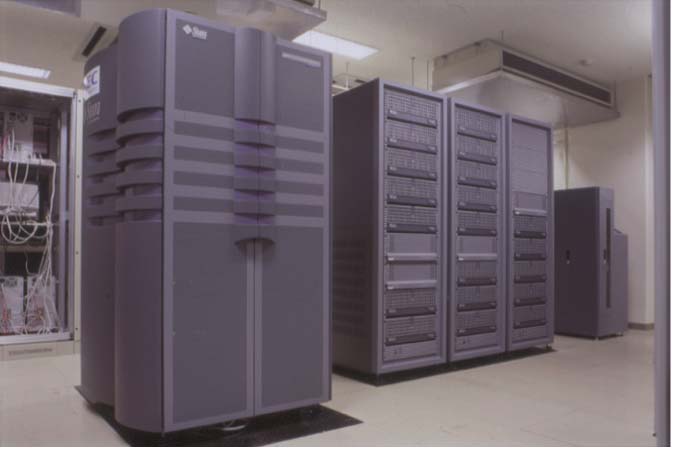It may sound like a platitude, but…the industry is now in the midst of an inflection point.
Behind us is the technology of client-server, with web goo glommed-on:
- UI rendered to fixed computers, implemented using HTML(5) and Javascript.
- Application logic built in Servlet/JSP, PHP, or ASPNET.
- Relational databases as a store. Data is accessed via datastore-specific protocols.
Ahead are pure web technologies:
- UI rendered to mobile computers, and optimized for device capability. Android, iPhone, iPad, and Windows8 are the key options, but more will emerge. The Kindle, XBox, and PS3 are the up-and-comers. The HTML-based web-browser UI will remain as a least-common denominator for some time, but there’s a steady trend away.
- Application logic built in dynamic languages. Ruby-on-Rails, PHP, Python. Javascript was the first web app server language (Netscape Live server in 1995 and ASP Classic in 1996) and it is now back, with Node.js.
- Data stores using NoSQL databases with massive scaleout. Data is accessed over HTTP, via REST.

Remember when “Scale” meant a really large box with lots of CPUs in it? We’ve moved to farms of managed computers that accomplish the same thing. Rather than depending on the hardware design to support the scale out, we’ve now done it in software. Rather than relying on the CPU front side bus to move data around, we’re depending on 40GBps or even 100GBps ethernet and software-based data-dependent prioritization and routing.
The force behind the economy of scale of standard high-volume components has not abated. If you wanted to build a superfast computer for one moment in time you might resort to some custom hardware. But the pace of evolution and improvement in CPU, memory, storage, and networking is such that the value of any dedicated hardware declines rapidly, even during design. It makes no economic sense to pursue the scale-up course. Designs need to accommodate evolution in the ecosystem. Just as the “Integrated” vendor-specific computers of the late 80’s gave way to “open systems”, the integrated single computer model is giving way to the “farm of resources” model.
This is all obvious, and has been for some time. Companies like Google were ahead of the curve, and dragged the rest of the industry with them, but now architectures based on the idea that “the datacenter is the computer” are now available for low cost to just about everyone. These architectures have elastic compute, network, and storage, along with the software architecture to exploit it. The upshot is you can just add resources and you get additional, usable performance. Unlike the old “scale up” machines, this approach is not limited to 16 CPUs or 64 or 1024. Just keep going. People call it “cloud technology”, but the main point is elasticity.
The inflection point I spoke about is not defined by a particular month, like Novermber 2012. or even a year. But over the past 6 years, this transition has been slowly, inexorably proceeding.
The one missing piece to the puzzle has been management skills and tools; The gear was there, and the software has continued to improve to exploit the gear, but people were initially not comfortable with managing it. This is dissipating over time, as people embrace the cloud. We’re realizing that we no longer need to perform {daily,weekly} backups because the data is already stored redundantly in Cassandra.
Even as cloud technology gets democratized, drops in price, and becomes more manageable, the capability of a single high-volume server computer continues to ramp upward on a log scale. This means that the old “automation” tasks, tracking orders, ERP systems (whether custom or not)… will be fulfilled by single machines, with optional redundancy.
Cloud technology therefore presents a couple opportunities:
- For technology conservatives, where IT is a cost center, the maturation of cloud tech drops the cost of deploying new systems, and of handling peak load. A company can purchase short-term options for compute to handle the proverbial “black friday” or “Victoria’s Secret Fashion show” load. This opportunity is somewhat conflated with the ongoing drop in the cost of technology. Basically, the cost is dropping, and it is dropping even more if you let someone else host your servers.
- For companies that view technology as a business enabler, cloud tech allows them to pursue innovative new approaches for relatively low cost and risk. New partner-enabling initiatives; new channels; new markets or new approaches to the markets they already play in.
Without a doubt, the big payoffs come from the latter, expansive approach. You can’t grow by cutting costs. You *can* grow by increasing speed or efficiency – let’s say, dropping your turn-time on commercial loan approvals from 52 days to 22 days – but the big growth is in entirely new approaches.
But you don’t know what you don’t know. To uncover and develop the opportunities, companies need to dive in. They need to be pushing beyond their normal competencies, learning new things.